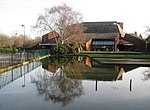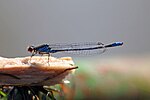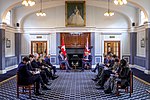Brook House F.C.
1974 establishments in EnglandAssociation football clubs established in 1974Combined Counties Football LeagueFootball clubs in EnglandFootball clubs in London ... and 7 more
Isthmian LeagueMiddlesex County Football LeagueSouthern Football League clubsSpartan LeagueSpartan South Midlands Football LeagueSport in the London Borough of HillingdonUse British English from June 2015
Brook House Football Club is a football club based in Hayes, Greater London, England. Founded in 1974, they are currently members of the Combined Counties League Division One and play at Farm Park.
Excerpt from the Wikipedia article Brook House F.C. (License: CC BY-SA 3.0, Authors).Brook House F.C.
Kingshill Close, London Yeading (London Borough of Hillingdon)
Geographical coordinates (GPS) Address Nearby Places Show on map
Geographical coordinates (GPS)
| Latitude | Longitude |
|---|---|
| N 51.534747222222 ° | E -0.41470833333333 ° |
Address
Kingshill Close
UB4 8DD London, Yeading (London Borough of Hillingdon)
England, United Kingdom
Open on Google Maps










